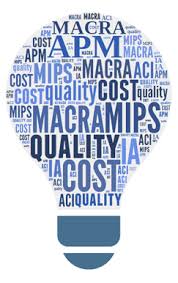 With the adoption of EMR technology, transformative steps in healthcare have improved the safety, effectiveness, efficiency, education, responsiveness, and overall care of patients. A subsequent step in the evolution of EMR is to increase access to health information, offer functionality for providers for ordering tests, checking results, and ease the burden of sharing information to aid in patient care. The next step forward is integrating patients into their medical record via Patient Portals. A Patient Portal allows the patient to interact and communicate with their healthcare providers 24/7 through the internet. Portals can be applications on stand-alone websites, or applications integrated into the provider’s existing website, while others are modules added on to EMR systems.
With the adoption of EMR technology, transformative steps in healthcare have improved the safety, effectiveness, efficiency, education, responsiveness, and overall care of patients. A subsequent step in the evolution of EMR is to increase access to health information, offer functionality for providers for ordering tests, checking results, and ease the burden of sharing information to aid in patient care. The next step forward is integrating patients into their medical record via Patient Portals. A Patient Portal allows the patient to interact and communicate with their healthcare providers 24/7 through the internet. Portals can be applications on stand-alone websites, or applications integrated into the provider’s existing website, while others are modules added on to EMR systems.
CMS initially required providers and facilities to provide electronic access to patient health records through incentive/penalty programs, such as the EHR Incentive Program known as Meaningful Use. This was in order to encourage patient access to and utilization of EMRs and Patient Portals. This has now evolved into the View, Download and Transmit (or VDT) requirements and is continuing to stair step up the integration even further in 2019 with the requirements around Patient-Generated Health Data. This data can range from fitness tracker logs, daily blood pressure or glucose monitoring logs, to food diaries and beyond. Patients self-track and upload their data into the Patient Portal for their providers to review and act upon when necessary.
Individuals who are tracking their health data, uploading it to a portal, engaging providers with questions about their care through direct messaging, are all signs of Patient Activation. This concept describes the knowledge, skills and confidence a person has in managing their own well-being and health care. Activation is more than compliance. Compliance is about persuading a patient to follow recommended medical advice. Activation encourages willingness of the patient to take independent actions to manage their health and care. Developing a partnership between provider and patient that shifts daily decision-making and health ownership back to the patient to manage their health conditions encourages buy-in and engagement. Studies have shown links between highly activated patients and positive care experiences, better health outcomes, and lower costs.
Join Kentucky REC for our webinar “Patient Portals: Getting The Most Out Of Your Portals” on July 26, 2018. We will have an in depth discussion of the need for patient portals, how to promote patient activation and experience, and how maximizing your portal capabilities can positively impact your results in the Quality Payment Program and other Quality Programs, such as the Kentucky Medicaid EHR Program (Promoting Interoperability Program) for 2018.
Webinar – QPP: Patient Portals – Getting the Most Out of Your Portals
Thursday July 26th 12-1 p.m. ET
Contact the experts at Kentucky REC for all your QPP and MIPS questions. We’re here to help. Call us at 859-323-3090.

